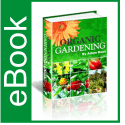Vegetable Garden Design – Laying Out and Planting Vegetable Gardens
Vegetable Garden Design – Laying Out and Planting Vegetable Gardens
Article by Adam Faston
Vegetable garden design is vital as you start planting vegetable gardens, because it’s important to know how the garden will be laid out. Companion planting, planting space, and what type of vegetables you want to plant are all elements that must be considered when putting together your garden layout. Here are some helpful tips on how to plan your own garden and start planting vegetables.
Take Time to Sit Down and Plan
Before choosing a vegetable garden design you need to decide on what variety of vegetables you would like to plant and where you would like to place them. Here are additional factors you need to consider for your garden layout:
* Type of Vegetables * Amount of Light in the Space * Drainage System * Soil Amendments * Garden Space * Additional Space (if needed)
You also need to think about whether you want to plant a variety of vegetables, or you want to grow one type of vegetable. Researching about the amount of light certain vegetables need, and the amount of space needed are both vital facts that need to be considered.
Make a list of vegetable plants you want to use and find the plant requirements of each, and then compare that with the available garden space you have. This will provide you with an idea of where you need to place certain vegetables in your space.
Choose Your Type of Garden Layout
Vegetable garden design layouts come in three basic types and they are: rows, beds and “potager” style.
The most popular type is the rows style of layout, which involves planting seeds in a row which can either consist of planting one type of seed in a row or several different types of seed.
The bed type of vegetable garden design is similar to the rows style, but in a smaller way. This design allows you to access the plant beds from the edge of the garden instead of coming from the interior of the planting bed. This allows you to avoid stepping on the beds, which is important, because that tends to harden, or pack down the soil and makes it difficult to aerate and dig in the fall or spring. An added convenience is that the bed style is a great way to make the most of your available garden space, and for easy gardening, you can even use raised beds.
Of all the styles, the “potager” type is the most decorative vegetable garden design. The word, “potager,” which means kitchen garden in French, is described as geometric, which allows you to plant your garden by color or even food type, in circles or whatever shape you prefer.
Companion Planting as an Option
Companion planting is the placement of different types of plants together that actually help each other in the growing process. For instance, Native Americans commonly planted corn, beans and squash together. While the corn gives the beans a place to climb, the beans place nutrients in the soil for its three companions and the shade from the squash leaves provides shade for the plant roots beside it. This preserves water as well as serving in the prevention of weeds.Onions are great companion plants, as well, because they tend to drive aphids and slugs away from other vegetables. Basil and carrots make great companion plants for tomatoes, because they actually improve the tomatoes taste. One final example is horseradish, which when planted with potatoes, will protect them from disease.
This concept is certainly worth spending time on, and will provide you with years of enjoyable and successful gardening. For more information, you can do research in your local library or online for vegetable garden design.
About the Author
Adam Faston is an organic gardening enthusiast and a lover of the great outdoors! He runs a website offering href=”http://www.gardeninghelponline.com”>Gardening Help on a variety of different gardening and landscape related topics at: http://www.gardeninghelponline.com

 October 22, 2011
October 22, 2011 







